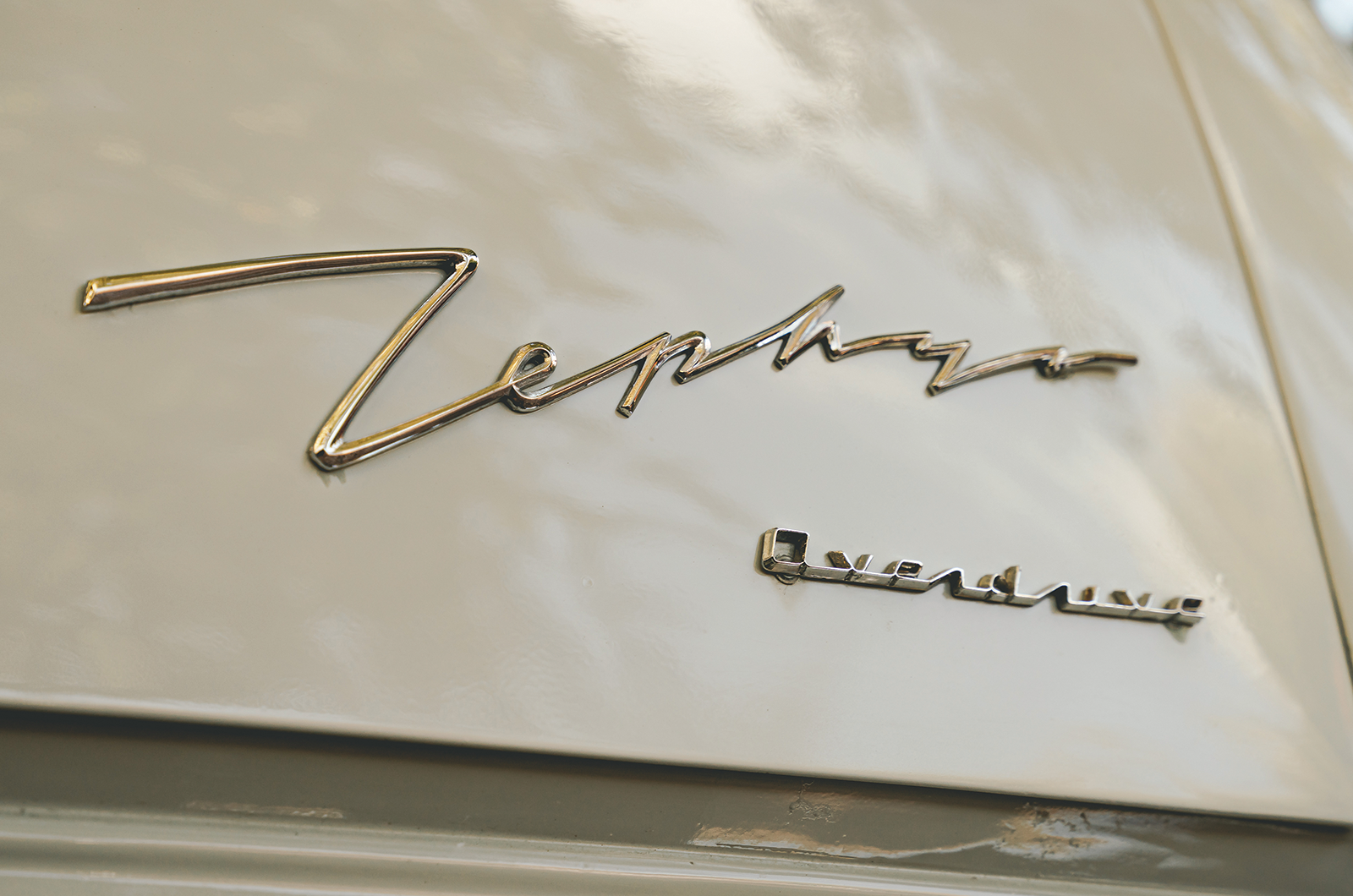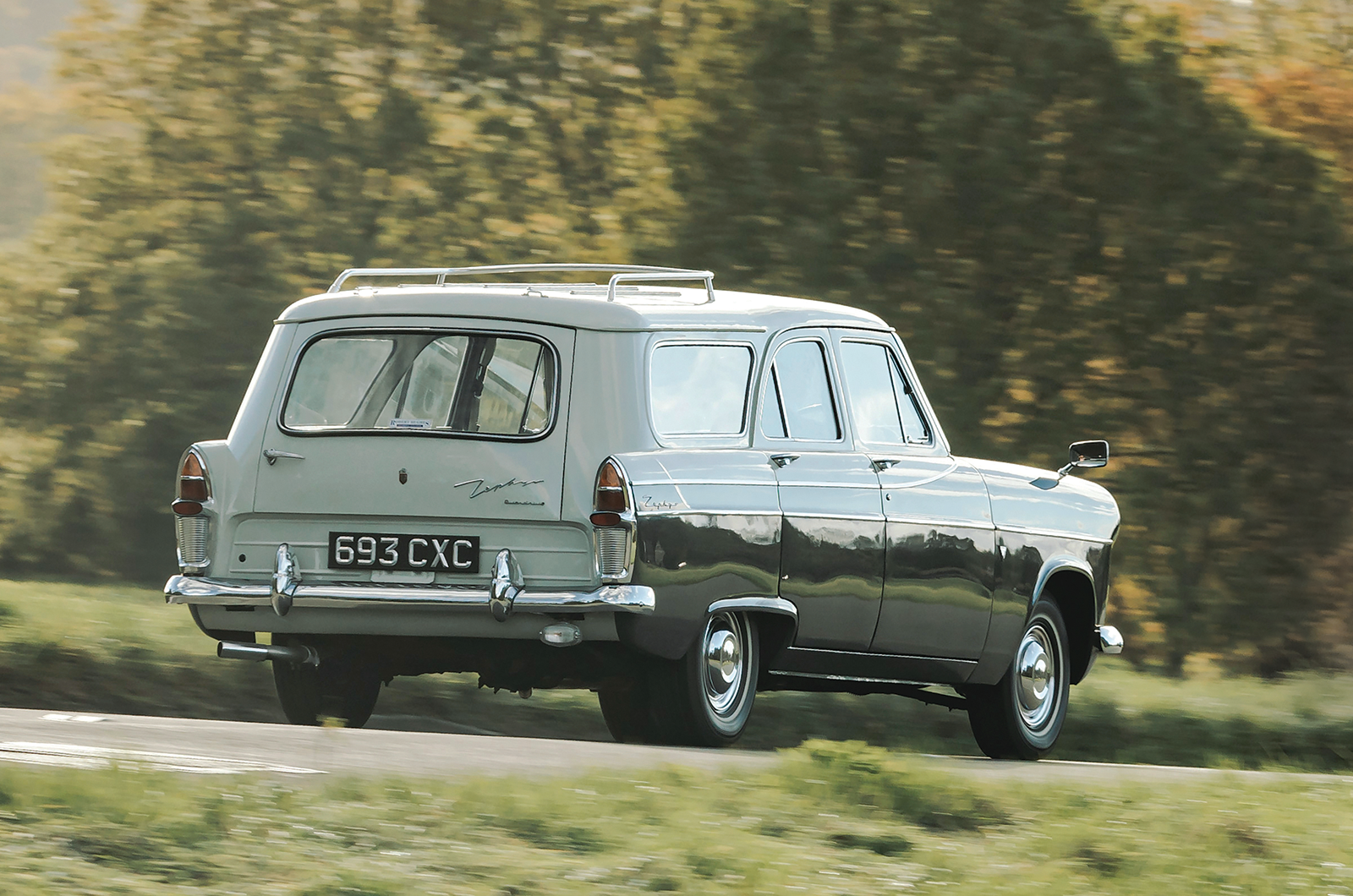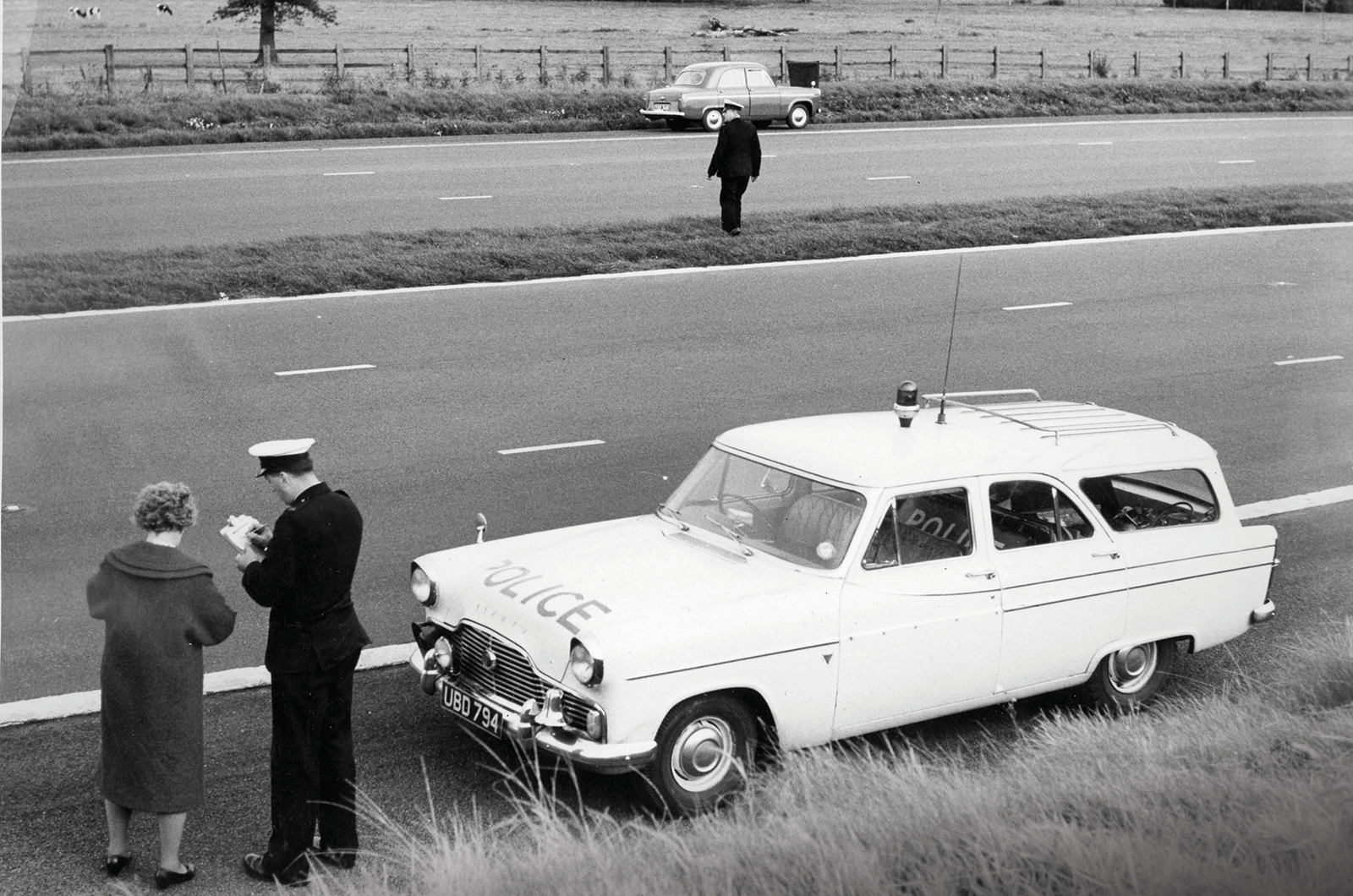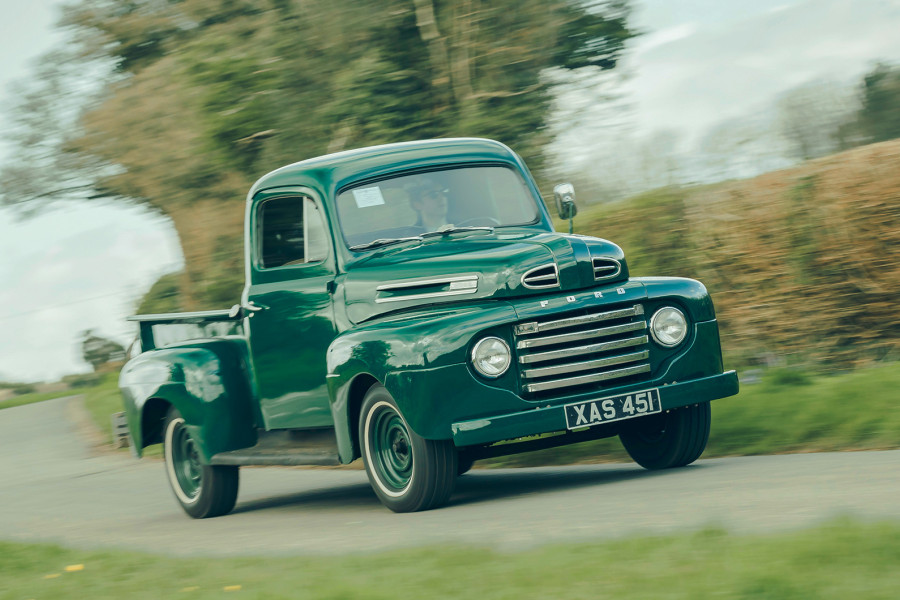Inside, with its Expresso Bongo coffee-bar dashboard, giant steering wheel (with chromed horn rim) and Minimalist instrumentation, the Zephyr is a fine example of late-’50s Detroit sensibilities on a British scale.
The Ford Zephyr MkII Farnham estate is a handful at low speeds, but easy to place once rolling along
Anybody unfamiliar with 1950s cars would likely need a week in respite care after any time behind the wheel of the Ford, with its one-size-fits-all driving position and ponderous disposition on the road.
In fairness it is actually quite capable, with a smooth, responsive and sweet-sounding engine that breezes you away with an absence of fuss or effort that would have been a dream for most drivers 60 years ago.
Beyond that, driving it properly requires the sort of physical effort, and powers of judgement and anticipation that are no longer widely found in the motoring population.
‘The wagons had the hardest existence of all these cars. They are not often seen today and are deservedly coveted’
However, drivers in the 1950s, ’60s and ’70s would not have considered the steering heavy, and it is only really a chore during manoeuvres at low speeds.
At other times it self-centres nicely and allows you to place the car quite accurately; the squishy bench seat, even with a central armrest to lean on, is more of a hindrance to brisk motoring than soggy suspension or excessive understeer.
This quite firmly sprung car suffers from neither.
The Ford Zephyr MkII Farnham estate has a large, side-hinged tailgate
It probably had one of the better column changes, too: smooth if not especially quick, and rendered much more versatile by the Borg-Warner overdrive.
As well as giving three additional speeds, it allows you to freewheel below 30mph.
Above that speed – with the under-dash handle pulled out – the overdrive cuts in when you release the throttle.
Kicking down will disengage it, and, on a trailing throttle, clutchless changes are possible, although I didn’t indulge.
The MkII Consul/Zephyr/Zodiac boom saw ED Abbott build 5643 examples between 1956 and 1962
At a time when station wagons tended to be either rather grand, half-timbered jobs or not much more than a van with windows, the ED Abbott-converted Fords of the 1950s and ’60s probably did more to change buyers’ perceptions than any other car of their ilk.
They gave Dagenham the confidence to mass-produce wagon versions of the Anglia, Cortina and, in 1972, the Granada, the appearance of which signalled a full acceptance of the luxury Ford estate, albeit German-designed and built.
With its space, versatility and performance (at least in 3-litre V6 form), the Granada was a lifestyle machine cum workhorse that was perceived by many as more desirable than the saloon on which it was based.
In other words, exactly the formula that made the Zephyr and Zodiacs so enticing 15 years earlier.
Images: Max Edleston
Thanks to: Robert Hughes Automobiles
Classic Ford estates: ED Abbott’s coachbuilt wagons
Thanks to Ford over-building the MkI Zephyr, ED Abbott could chop away at the body without fear of compromising rigidity
There had been coachbuilding on the site at Farnham since before the First World War, but ED Abbott began trading in 1928, refurbishing commercial vehicles and rebodying luxury models while also fulfilling contracts for Rootes and BMW importer AFN.
Post-WW2 the firm was controlled by former Aston Martin boss RG Sutherland, having built airframes between 1939 and ’45.
The contract to build the handsome drophead version of the Bristol 405 was prestigious if short-lived, but the job of converting big Fords into estates brought stability and decent volume.
Ford’s MkII Consul/Zephyr/Zodiac worked well as an estate car
The firm was converting 30 cars a week at the height of the MkII Consul/Zephyr/Zodiac boom, and annual Ford estate production at Abbott peaked at 1475 cars in 1960.
Total MkI production is unknown, but unlikely to match the 5643 MkII Farnhams built between 1956 and ’62.
The 1962-’66 MkIII estates were based on the six-light Zodiac bodyshell, for more streamlined production.
The MkIII Ford Zephyr and Zodiac estates were popular police cars
With a clean side profile and a one-piece, top-hinged GRP tailgate, they were perhaps the best-looking Farnhams.
They were less popular than the MkIIs – but widely used by motorway police – with some 4322 built, mostly Zephyrs and Zodiacs plus 725 Zephyr 4s, the Consul badge having been dropped.
The Abbott Fords by then faced competition from the Hawk and Super Snipe estates by Carbodies, and Vauxhall Cresta conversions by Martin Walter.
An estate version of Ford’s MkIV Zephyr/Zodiac was much trickier to build
In 1966, Abbott struggled to adapt the Farnham estate-car proportions to the new-shape MkIV.
Ford claimed the MkIV Zephyr/Zodiac had the largest load space of any British wagon, but the strut turrets for the much-derided independent rear suspension intruded into the luggage area: one magazine calculated that the MkII Cortina could carry more weight than the massive MkIV.
Factfile
Ford Zephyr MkII Farnham estate
- Sold/number built 1956-’62/5673
- Construction steel monocoque
- Engine all-iron, ohv 2553cc ‘six’, single Zenith carburettor
- Max power 90bhp @ 4400rpm
- Max torque 137Ib ft @ 2000rpm
- Transmission three-speed manual with optional overdrive, RWD
- Suspension: front independent, by MacPherson struts, anti-roll bar rear live axle, semi-elliptic leaf springs, lever-arm dampers
- Steering worm and peg (recirculating ball from 1957)
- Brakes drums
- Length 14ft 10¼in (4528mm)
- Width 5ft 8½in (1740mm)
- Height 5ft 2in (1575mm)
- Wheelbase 8ft 11in (2718mm)
- Weight 2838Ib (1285kg)
- Mpg 25
- 0-60mph 18.7 secs
- Top speed 90mph
- Price new £1227
- Price now £35,000*
*Prices correct at date of original publication
Enjoy more of the world’s best classic car content every month when you subscribe to C&SC – get our latest deals here
READ MORE
Guilty pleasures: Ford Zephyr/Zodiac MkIV
Ford Corsair: the Thunderbird from Halewood
24 classic estate cars we love
Martin Buckley
Senior Contributor, Classic & Sports Car





























